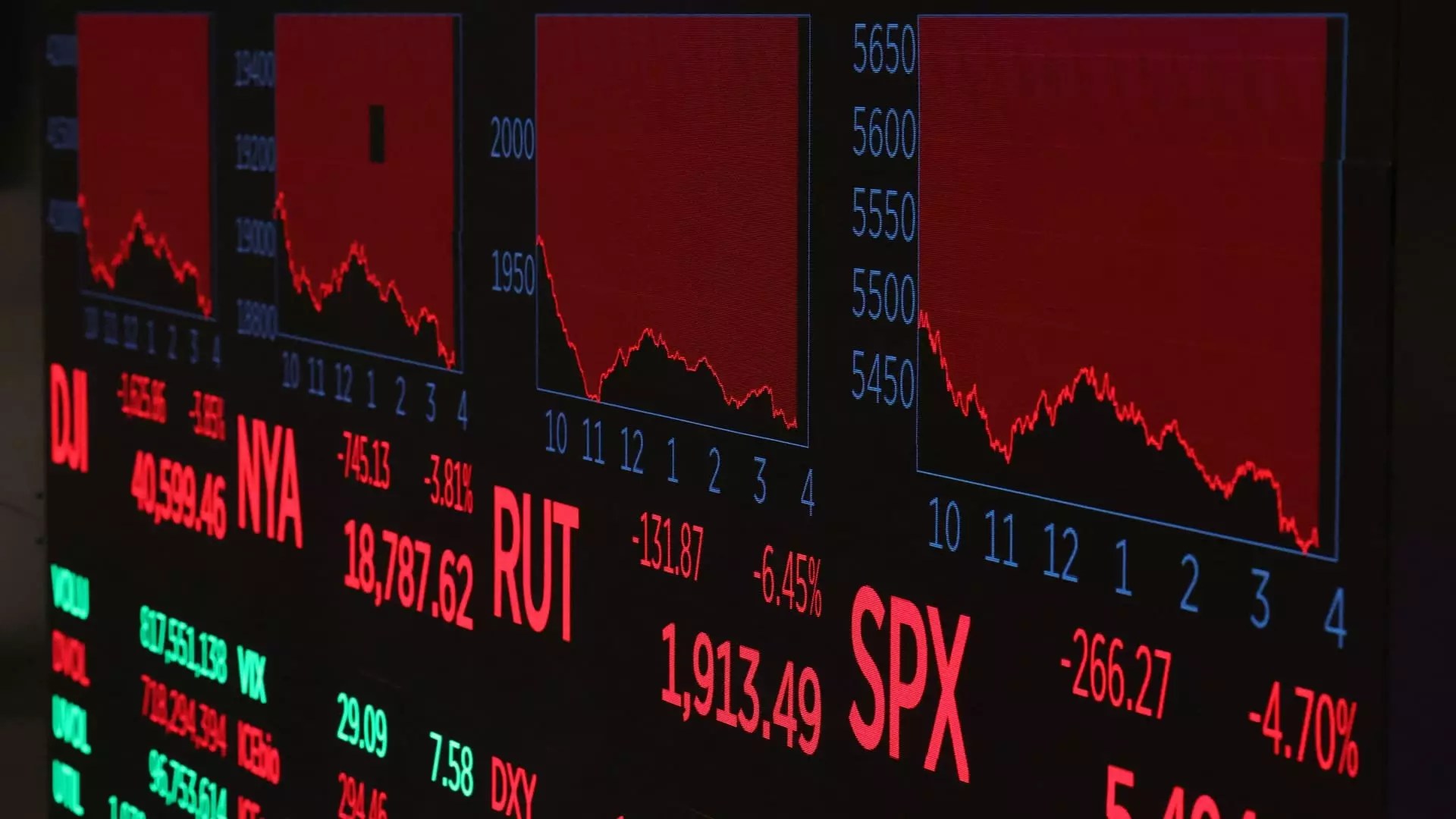As the stock market oscillates amidst political decisions and economic uncertainties, retail investors are carving out a distinctive identity. Recently, the tides turned dramatically with the tariff turmoil initiated by President Trump’s announcements. While Wall Street quivered over predicted downturns, everyday investors like Rachel Hazit utilized market dips as lucrative opportunities. Their boldness presents a sharp contrast to the otherwise cautious institutional investors, leading to a compelling narrative on the evolving landscape of investment strategies.
Momentum of the Everyday Investor
By examining the recent behavior of retail investors, we see an intriguing trend of resilience and optimism. Rather than capitulating in the face of market fluctuations, these traders embody a “buy the dip” philosophy. When the market suffered an almost 5% fall after Trump’s initial tariff proposal, Hazit and others weren’t disheartened. Instead, they utilized their idle cash to accumulate stocks, demonstrating a profound understanding of market timing that discounts mere panic reactions. It turns out that everyday investors can significantly influence market dynamics when given the right conditions.
This is no longer a mere trend; it’s a movement. Data from Vanda Research substantiates this vigor, indicating retail investors deposited roughly $8.8 billion into U.S. stocks over a mere four-day span as the market plummeted. Record-breaking net inflows highlight a compelling confidence among individual traders, defying the traditional bearish tendencies during economic uncertainty.
The ‘Buy the Dip’ Phenomenon
The notion of “buying the dip” has received renewed vigor among retail investors. It’s not merely a strategy; it’s a philosophy that stimulates long-term investor confidence, even in tumultuous times. As the market dipped following Trump’s tariff declarations, retail investors seized what they perceived as discounts, disproportionately fueling their portfolios. This underscores a significant cultural shift—no longer are markets the sole playground of Wall Street; everyday investors are reclaiming their agency by deploying strategic purchasing.
Analysts are quick to point out, however, that enthusiasm doesn’t negate risk. The surge of investment so closely following a volatile market reflects not only individual agency but also aspirations of budding wealth. The CBOE Volatility Index (VIX), with its sharp rise, serves as a reminder that retail investors walk a tightrope of exuberance amidst a storm of potential pitfalls.
Institutional vs. Retail Investors: Different Playbooks
In this period of turbulence, a new dichotomy surfaces: the cautious institutional investor versus the audacious retail trader. Institutions largely retreated from the market, reflecting a defensive stance driven by restructuring economic forecasts and fears of a potential recession. Contrastingly, retail investors demonstrated a sense of agency, seemingly unfazed by the economic armageddon that professional strategists forecasted.
Market data confirms this divergence, with retail traders pushing billions into equities while institutional investors scrambled for cover. This lack of capitulation from retail investors may serve as a bellwether for a larger trend of democratization in investment, where the average individual can have a tangible impact on market behavior. This evolving landscape signals a shift away from traditional hierarchical investment strategies toward a more egalitarian approach.
Role of Influencers and Education
Influencers and educators are now integral to this shifting paradigm as they empower retail investors with knowledge. Tori Dunlap, for instance, showcases the value of investing education, highlighting the potential of wealth accumulation in downturns. Social platforms have enabled experts to reach broader audiences, demystifying investment strategies for the average individual. This is about more than just trading stocks; it’s a cultural shift towards financial education and literacy.
The proliferation of knowledge-sharing is altering how individuals perceive investment risks and opportunities. With resources available for navigating complex financial landscapes, retail investors are no longer reliant solely on traditional financial institutions but are increasingly educating themselves to make informed decisions.
The Shadow of Economic Dilemmas
Despite the eagerness to invest, a cloud of uncertainty looms over the economy. Rising inflation, tariff policies, and recession fears complicate the investment landscape for everyone, including retail traders. Yet, rather than retreating into caution, individuals like Namaan Mian reiterated their long-term strategies to invest in broad market indexes, focusing on sustained growth rather than short-term volatility.
Even as retail investors take calculated risks, they remain acutely aware of the broader implications of economic policy on their future financial power. Hazit articulates this ambivalence through her acknowledgment of the uncertain environment—she continues investing with caution, highlighting that the optimism observed among retail traders sits alongside real concerns for the future.
In the grand scheme, retail investors are not merely navigating market fragility; they are leveraging knowledge, conquering uncertainty, and challenging the entrenched systems of Wall Street with every purchase. As we move deeper into this dynamic landscape, the distinction between bullish retail enthusiasm and institutional caution will become increasingly pivotal in shaping the future of market behaviors.


Leave a Reply